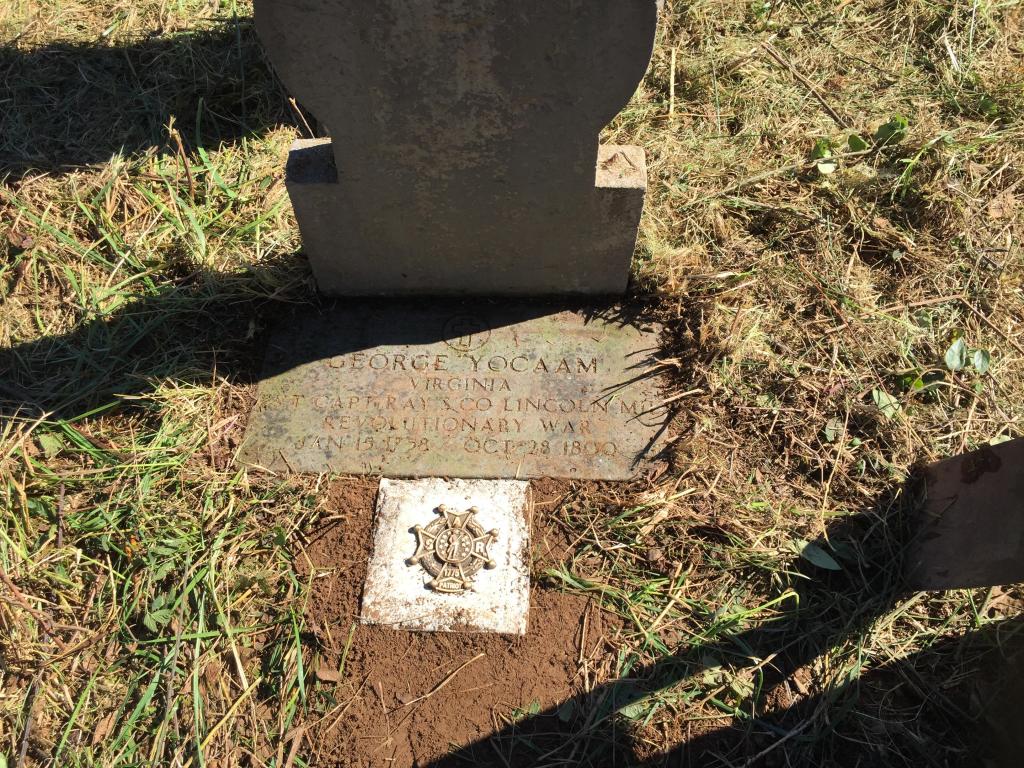George YOAKUM/YOCUM
SAR Patriot #:
P-325960
The following information was assembled from numerous sources and cannot be used directly as proof of Qualifying Service or Lineage.
It is considered a research aid and is intended to assist in locating sources that can be used as proof.
State of Service: VA
Qualifying Service: Private / Patriotic Service
DAR #: A129600
Birth: Feb 1755 / / VA
Death: 28 Oct 1800 / Claiborne / TN
Qualifying Service Description:
- Scout, Greenbrair, Virginia Militia
- Furnished Supplies, Greenbriar County
Additional References:
- Roster of Soldiers and Patriots of the Am. Rev buried in TN
- Gwathmey, Hist Reg Of Va In The Rev, pg 853
- Abercrombie & Slatten, Va Rev Pub Claims, Vol 2, pg 419
- Harding, George Rogers Clark & His Men, pg 186
Spouse: Martha Patsy VanBebber
Children: Isaac; George; Peter; Jesse; John;
Members Who Share This Ancestor
| Date Approved | Society | ACN | SAR Member Info | Lineage via Child | View Application Detail | |
|---|---|---|---|---|---|---|
| 1992-08-05 | TN | 212727 | John Enmon Crowder IV (139333) | Isaac | ||
| 1992-12-14 | TN | 211843 | John Enmon Crowder Jr (139863) | Isaac | ||
| 2012-12-06 | MO | 49755 | Daniel Ray McMurray (153204) | Valentine | ||
| 2019-08-30 | NE | 87009 | Paul Howard Burright (200016) | Jesse | ||
| 2021-01-22 | IL | 94922 | Don Parker (217972) | Isaac | ||
| 2021-01-22 | IL | 94923 | Rodney Ray Parker (217973) | Isaac | ||
| 2021-01-22 | IL | 94924 | Jonathan Robert Parker (217974) | Isaac |
Burial:
Location:
/ Claiborne / TN / USA
Find A Grave Cemetery #:
Marker Type:
vertical stone, horizonal VA marker, SAR marker
SAR Grave Dedication Date:
14 Nov 2020
Comments:
Photo displayed courtesy of Donald Campbell, TNSSAR
Directions to Cemetery / Gravesite:
The cemetery is the Old Rogers Cemetery, near Speedwell. Take 25E south from Middlesboro, turn right onto Highway 63 at Harrogate. It is 9.3 miles down the road on the left, off the highway
